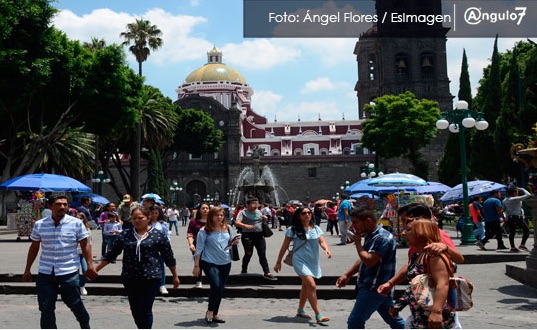. . SUSTAINABLE DEVELOPMENT . .
An article from Angula 7 (translated by CPNN)
In Puebla, the culture for tourism is concentrated in specific points such as the Historic Center. It is “worrisome” that this serves economic interests, rather than promoting general development. This was pointed out by Arturo Villaseñor García, spokesman of Colectivos Estación Cero, in an interview at the first “National Colloquium on Living and Community Culture”. He added that these cultural policies do not take into account the problems of living in communities and neighborhoods.

“We are concerned that this exercise of centralizing or concentrating culture and having a bias to culture towards a particular type of art, or artistic expression, fails to take advantage of the knowledge of our peoples,” he said.
He referred to the “privatization” of the public space. Certain spaces are dedicated to former rulers, for example, the International Baroque Museum (MIB), instead of dedicating places to the culture of the communities .
In Angelópolis, he said, cultural tourism focuses on the first picture of the city and a few spaces in the surrounding urban region, but these are very limited, while in other areas of the interior of the state as the Mixteca Poblana there are no workshops or activities. As for San Martín Texmelucan, there are no museums, no resources, no support for groups that focus on cultural issues.
(article continued in right column)
(Click here for the Spanish version)
How can tourism promote a culture of peace?
(article continued from left column)
“Decentralizing the cultural offer”
In that vein, he argued that past state administrations, instead of building the MIB or the Puebla Star that had “a high cost,” could have used the money to open spaces in which young people could develop their creativities.
“In the Historic Center there is a focus on tourism. This is OK, but only a part of what is needed. There is not much for the citizens. We need to decentralize the cultural offer and involve the communities, in order to generate collectivity, recreation and art as a motor of development and a culture of peace, “he said.
Villaseñor García added that, in addition to this, there is the problem that resources for culture have been reduced. This a problem because because there is little money, and groups are forced to compete for limited resources.
He pointed out that what is needed in Puebla is to open spaces and begin to develop public policy in general, since it is not only culture that is needed, but also theater, painting, dance, and other artistic expressions.
Finally, he indicated that these problems will be addressed in the national colloquium to be held in October in Mexico City, attended by groups from other states where their concerns will be raised, in order to elaborate a policy to promote a diversity of cultural and artistic expressions, to develop strategies and to promote a national agenda on the subject.